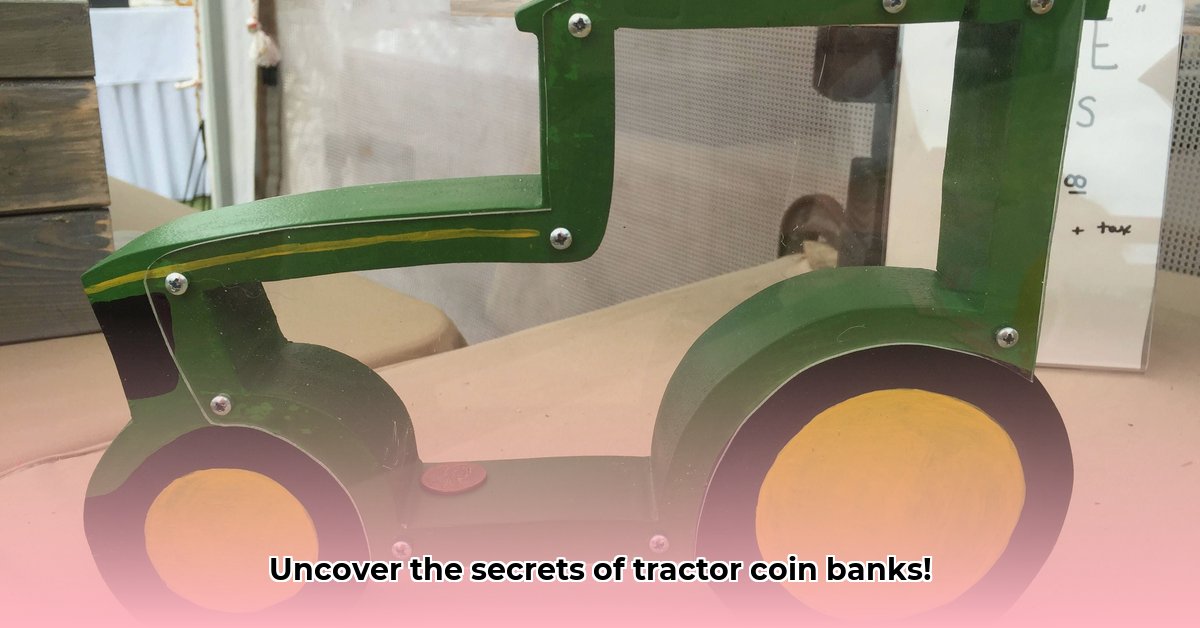
Ever noticed those charming little tractor coin banks? More than just piggy banks, they represent a fascinating intersection of agricultural history, toy manufacturing, and surprisingly, a dedicated collector's market. This article explores the world of tractor coin banks, delving into their history, manufacturing processes, collectability, and cultural significance. For more on 1950s tractors, check out this great resource: 1950s Tractors.
A Miniature History Lesson: The Rise of the Tractor Coin Bank
Pinpointing the exact origin of the tractor coin bank is challenging, but their emergence likely correlates with the increased popularity of toy tractors during the mid-20th century agricultural boom. These miniature metal replicas served as charming tributes to the hardworking machines that fueled the nation's food production. Early examples typically featured simpler designs, reflecting the manufacturing capabilities of the time. As technology advanced, so did the detail and complexity of these miniature tractors, evolving from basic shapes to intricately detailed models, mirroring the progress in actual tractor design. This evolution offers a compelling miniature history lesson within itself. Some of these early, simpler designs are now highly sought after by collectors today. Did you know that the condition of an original box can significantly impact a coin bank's value?
From Metal Mold to Money Saver: The Manufacturing Process
Many tractor coin banks are produced using die-casting, a process involving pouring molten metal into a mold shaped like a tractor. This method is cost-effective and creates durable, long-lasting banks. Other banks may be crafted from sturdy plastic, offering a wider range of color and design possibilities. Following the initial molding, smaller details like wheels, exhaust pipes, and driver's seats are added. Finally, they're painted and finished, ready for their role as charming coin holders. Premium collector's items often feature hand-painted details, giving each piece a unique, personal touch. The level of craftsmanship and attention to detail, often overlooked, is impressive considering their small size. But have you considered the environmental impact of the materials used in their production?
The Collector's Market: Value and Rarity
A thriving community of enthusiasts actively collects tractor coin banks, turning it into a rewarding and engaging hobby. Several factors influence a bank's value. Rarity is paramount; limited edition models or unique designs command higher prices. Condition plays a crucial role: a pristine, mint-condition bank is significantly more valuable than one showing wear and tear. The brand and manufacturer also matter; established toy brands like Ertl or Tonka often fetch premium prices. Even the original packaging can increase the bank's worth. It's a market similar to collecting vintage baseball cards, with condition and rarity being among the most influential factors in determining overall value. What's the most valuable tractor coin bank you've ever seen?
More Than Just Change: Symbolism and Cultural Significance
Tractor coin banks serve as engaging nostalgic artifacts. They evoke memories of simpler times, conjuring images of rural landscapes, family farms, and the powerful presence of agricultural machinery. They symbolize a connection to rural life, agricultural heritage, and a unique aspect of Americana. These little banks are miniature time capsules, capturing a specific moment in history, and evoking a sense of a bygone era. What memories, personal or collective, are sparked by the imagery of tractors and farm life?
How to Assess Value: A Collector's Guide
Curious about the potential value of that tractor coin bank you discovered? Here's a quick guide:
- Brand/Maker: Established brands like Ertl or Tonka significantly increase value.
- Rarity: Limited editions or unique designs are highly sought after.
- Condition: Excellent condition – free from dents, scratches, or fading – is critical.
- Materials: Die-cast metal is generally preferred over plastic.
- Age: Older banks, especially those reflecting specific historical eras, often hold more value.
Remember, thorough research is key. Online resources, collector forums, and professional appraisals can help determine the true worth of your find.
The Enduring Allure of the Little Tractor
Tractor coin banks are more than mere coin holders; they're charming historical pieces, miniature works of art, and a symbol of the ongoing appeal of agricultural heritage. Whether a seasoned collector or a curious beginner, exploring the world of these captivating miniature machines offers a uniquely rewarding experience. So, why not add to your collection and uncover the unique charm of these little metal tractors today?